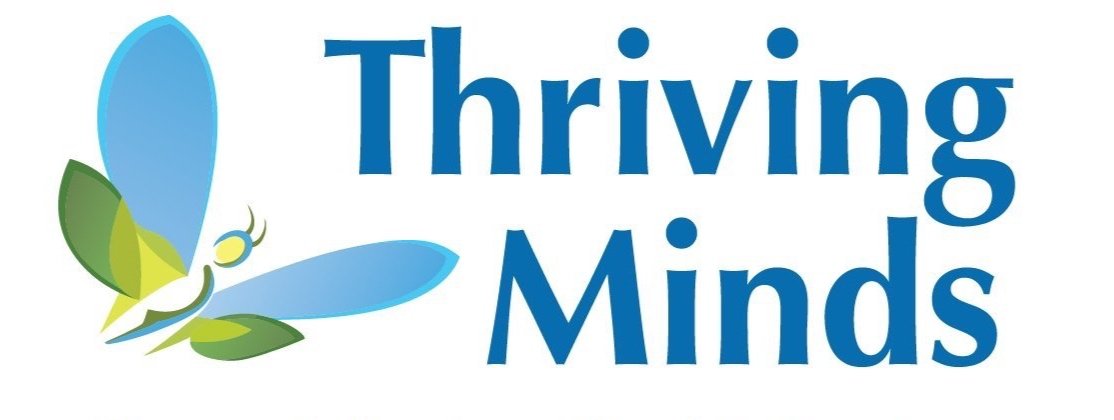Very Mindful, Very Demure: Leveraging Mindfulness in a Season of Thanks
What is Mindfulness?
Mindfulness is the practice of paying attention to the present moment without judgment. It involves becoming aware of our thoughts, feelings, and surroundings in a gentle and accepting way. Mindfulness is about observing what is happening right now, fostering a sense of calm and understanding that helps people manage overwhelming thoughts and emotions. Research shows that practicing mindfulness can reduce stress, increase focus, and improve emotional regulation, which makes it particularly beneficial for children and adults alike.
Mindfulness in Treating Children with Mental Health Disorders
In recent years, mindfulness has become a common tool in treating children with mental health disorders like anxiety, ADHD, and depression. Mindfulness is used in various therapeutic settings, often as part of a broader treatment plan that may also include cognitive-behavioral therapy (CBT) or family counseling. It has also been introduced in school settings to help children regulate their emotions throughout the day. By focusing on the present, children can learn to recognize and process their emotions without feeling overwhelmed. Studies have shown that mindfulness-based therapies can help children reduce anxiety, improve attention span, and manage stress by teaching them skills to stay grounded and regulate their emotions.
What Practices Are Part of Mindfulness?
Mindfulness isn’t a one-size-fits-all approach. It can take many forms, and people should explore which strategies work best for them. Some of the common mindfulness practices include:
Breathing exercises: Deep, focused breathing helps calm the nervous system, reducing stress and bringing a sense of peace.
Body scanning: This involves paying attention to different parts of the body, noticing areas of tension, and consciously relaxing them.
Guided imagery: Visualization techniques help children imagine calm and peaceful places, which can aid in emotional regulation.
Mindful walking or movement: Gentle, intentional movements like walking, stretching, or yoga help bring awareness to the body and present moment. Mindful walking can also be paired with sensory practices, such as the 5-4-3-2-1 approach. This involves identifying five things someone can see, four things they can touch, three things they can hear, two things they can smell, and one thing they can taste.
Mindful journaling or drawing: Writing or drawing mindfully allows children to express their emotions creatively and without judgment.
Gratitude: Identifying aspects of life that warrant gratitude and engaging in an activity to bring that gratitude so the front of one’s mind. This helps us to connect to the positive aspects of our lives.
Is Gratitude Effective for Supporting Mental Health Outcomes?
The answer is yes! Gratitude has been shown to improve mental health and well-being across age groups. Expressing gratitude—focusing on the things one is thankful for—encourages a positive outlook and helps shift attention away from stress and negative thinking. Research shows that gratitude practices can improve mood, reduce symptoms of depression, and even improve physical health by fostering a sense of optimism. For children, practicing gratitude can cultivate resilience and self-esteem, as it encourages them to look for the good in their lives, even in difficult times. By helping children develop this mindset early on, gratitude can become a lifelong habit that strengthens their emotional health.
5 Ways Children Can Practice Gratitude This Month
As many people gather for Thanksgiving this month, it is the perfect time for classrooms, clinicians, and families to engage in gratitude practices together. Below are a few ways that adults can support children and adolescents in trying out a gratitude practice or begin a gratitude practice of their own!
Gratitude Jar: Set up a jar where everyone in the family, class, or office can add notes about things they are thankful for. At the end of the month, or on Thanksgiving, read the notes together to celebrate.
Thankful Tree: Create a “thankful tree” by cutting out paper leaves and writing things you’re grateful for on each leaf. Attach them to branches or stick them to a wall to create a visual reminder of your family, office, or class’s gratitude.
Gratitude Walks: Go for a walk together and take turns pointing out things that you appreciate in nature or the community, like a beautiful sunset, colorful leaves, local businesses, or the sounds of birds. Adolescents might think of this as “romanticizing their life,” a trend on social media. When we look for the things in our lives that are positive, we will see them more. It’s a fun way to connect with each other and the environment.
Gratitude Letters: Children can either write or dictate a letter to someone that they would like to express gratitude for. Encourage children to be specific about the reasons why they are thankful for that person, what they add to their life, and the positive impact they have had. Letters can be sent or shared, or kept to themselves. The act of writing the letter is key!
Gratitude Journals: Encourage each person to write or draw three things they’re grateful for at the beginning or end of each day. This practice can help everyone focus on the positive, even on challenging days.
What’s New at Thriving Minds?
We recently announced Confident Kids Advanced Camp, opening summer 2025! This new, three-day intensive program is designed for graduates of prior Selective Mutism camps who are ready for more advanced challenges and goals. Learn more about the program by watching this video.

